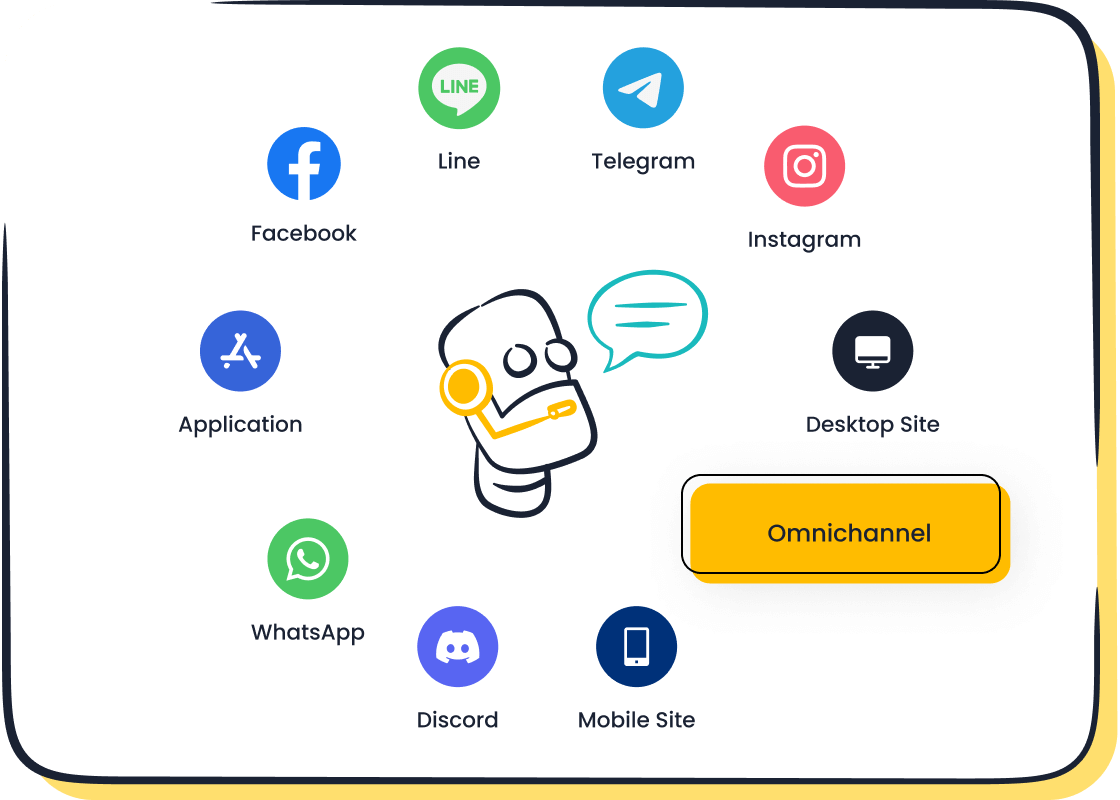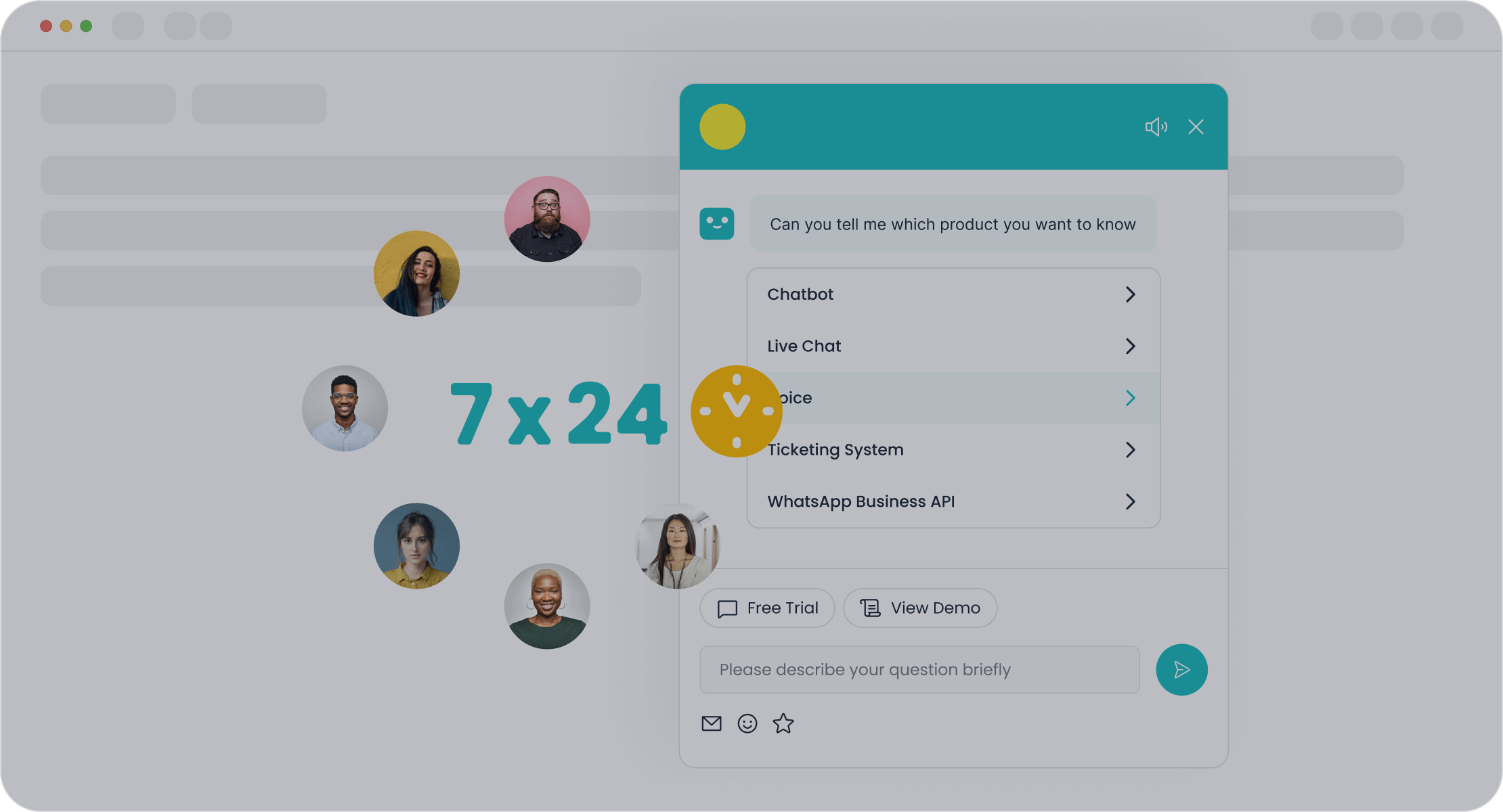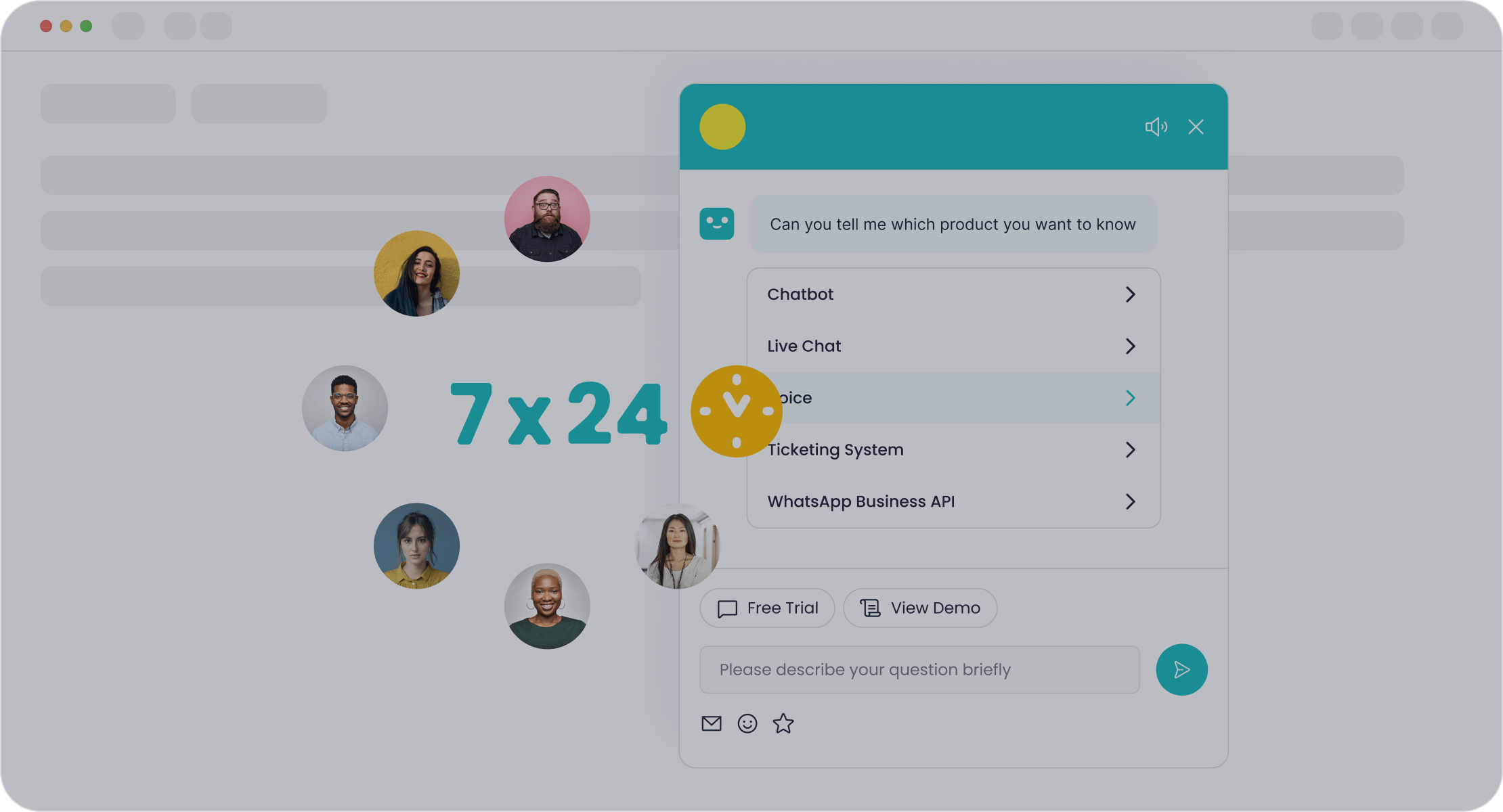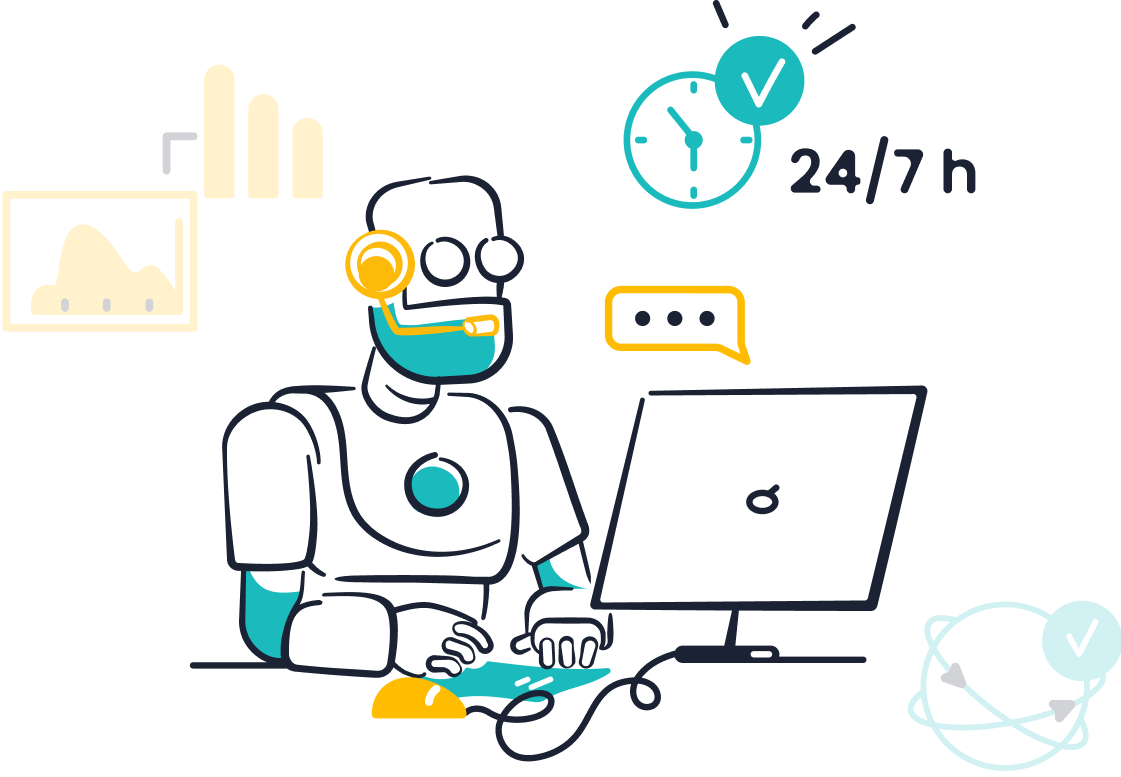Comparing Omnichannel and Traditional Customer Service Approaches

Choosing the right customer service approach can transform how you connect with customers. Businesses that prioritize customer experience often see higher satisfaction rates and long-term success. Efficient customer service not only resolves issues quickly but also makes customers feel valued, boosting sales and loyalty.
Omnichannel communication for customer service has become essential in today’s digital age. Studies show that 70% of global consumers prefer brands offering seamless omnichannel experiences. This approach integrates multiple channels, ensuring consistent and personalized interactions. For example, Sobot’s omnichannel solutions unify platforms like WhatsApp, email, and live chat, enabling businesses to deliver exceptional service.
So, how does omnichannel communication for customer service compare to traditional methods? Let’s explore.
Understanding Traditional Customer Service Approaches
Definition and Overview of Traditional Methods
Traditional customer service focuses on assisting customers through specific channels like phone calls, emails, or in-person interactions. These methods aim to resolve issues, answer questions, and provide support for products or services. Historically, businesses measured success using metrics such as customer satisfaction scores (CSAT) and net promoter scores (NPS). These metrics helped evaluate how well companies met customer expectations.
| Metric | Description |
|---|---|
| Customer Satisfaction Score (CSAT) | Measures customer satisfaction with a specific interaction or service. |
| Customer Effort Score (CES) | Assesses the ease of customer interaction and resolution of issues. |
| Net Promoter Score (NPS) | Gauges customer loyalty and likelihood of recommending the service to others. |
| Call Resolution Time | Focuses on the speed of resolving customer issues. |
| Number of Tickets Closed | Counts the volume of issues handled, prioritizing quantity over quality. |
| Customer Retention Rate (CRR) | Reflects the ability to retain customers over time, increasingly important in subscription models. |
As customer needs evolve, traditional methods often struggle to keep up. However, they remain foundational for many businesses, especially those prioritizing direct, human interactions.
Multichannel Strategies and Their Limitations
Multichannel customer service allows businesses to interact with customers through multiple platforms, such as email, phone, and social media. While this approach offers flexibility, it often lacks integration. For example, you might contact a company via email and later switch to a phone call, only to repeat your issue because the channels don’t share information.
- 61% of customers find it challenging to switch between channels during service interactions.
- Customers often need to repeat their issues with each new interaction.
- Different answers may be provided for the same question across channels.
- Agents may lack context, leading to frustration and inefficiency.
These limitations highlight why multichannel customer support can fall short of delivering excellent customer service. Without integration, businesses risk inconsistent communication and lower satisfaction rates.
Common Challenges in Traditional Customer Service
Traditional customer service faces several challenges in today’s fast-paced world. High turnover rates among agents, for instance, can disrupt service quality. Some industries report annual turnover rates exceeding 40%, costing businesses up to $2,500 per lost agent. Additionally, the rise in digital interactions—up by 50% since 2020—has overwhelmed many traditional systems.

Another major issue is customer dissatisfaction. Studies show that 86% of customers will leave a brand after two poor experiences. This statistic underscores the importance of delivering excellent customer service consistently. Traditional methods often struggle to meet these expectations, especially when customers demand faster and more personalized solutions.
What Is Omnichannel Customer Service?

Definition and Key Features of Omnichannel Support
Omnichannel customer service ensures seamless communication across multiple platforms, creating a unified experience for customers. Unlike multichannel strategies, omnichannel support integrates all channels, allowing customers to switch between them without losing context. For example, a customer can start a conversation on social media and continue it via email without repeating their issue.
Key features of omnichannel support include:
- Channel integration: All communication channels, such as email, live chat, and social media, are connected.
- Personalization: Customer data is centralized, enabling tailored interactions.
- Consistency: Customers receive the same quality of service across all platforms.
- Real-time updates: Agents can access the latest customer interactions instantly.
A study revealed that 87% of businesses recognize omnichannel as crucial for success, yet only 8% have mastered it. Additionally, omnichannel customers shop 1.7 times more than single-channel shoppers, highlighting its impact on customer behavior.
How Omnichannel Communication for Customer Service Works
Omnichannel communication integrates various platforms into a single system. This system allows businesses to track customer interactions and provide consistent support. For instance, if a customer contacts you via WhatsApp and later switches to live chat, the agent can view the entire conversation history in one place.
This approach enhances customer satisfaction by reducing wait times and improving issue resolution rates. Studies show that 90% of customers expect immediate responses, and 78% of B2B buyers choose vendors who respond first. Omnichannel support meets these expectations by streamlining communication and ensuring faster responses.
Key benefits include:
- Improved trust: 81% of consumers trust brands that offer consistent experiences.
- Enhanced loyalty: 62% of customers recommend brands with excellent service.
- Higher efficiency: Agents spend less time switching between platforms, focusing more on solving problems.
The Role of Sobot’s Omnichannel Solution in Enhancing Customer Experience

Sobot’s omnichannel solution revolutionizes customer service by integrating platforms like WhatsApp, email, and live chat into a unified workspace. This system enables agents to access customer data and interaction history instantly, ensuring personalized and efficient service.
For example, Opay, a financial services platform, used Sobot’s solution to manage customer interactions across multiple channels. The results were remarkable:
- Customer satisfaction increased from 60% to 90%.
- Operational costs dropped by 20%.
- Conversion rates improved by 17%.
Sobot’s solution also includes AI-driven automation, which resolves repetitive queries and reduces agent workload. Metrics like a 97% customer satisfaction score and an 85% problem resolution rate demonstrate its effectiveness.

By adopting Sobot’s omnichannel approach, businesses can enhance customer loyalty, improve efficiency, and stay ahead in today’s competitive market.
Comparing Omnichannel and Traditional Customer Service Approaches
Channel Integration and Consistency
The integration of channels is a defining feature of omnichannel customer service. Unlike multichannel customer service, where each platform operates independently, an omnichannel approach connects all communication channels into a unified system. This ensures a seamless experience for customers, as they can switch between platforms without repeating their concerns. For example, a customer starting a query on live chat can continue the conversation over email, with the agent having full context.
| Feature | Multichannel | Omnichannel |
|---|---|---|
| Integration | Channels operate independently | All channels are integrated |
| Consistency of Experience | Inconsistency in service quality | Unified and consistent experience |
| Customer-Centric Approach | Focus on providing options | Focus on a seamless customer journey |
This consistency of experience builds trust and loyalty. Customers no longer face the frustration of fragmented communication, which is common in traditional systems. By adopting an omnichannel strategy, businesses can ensure that every interaction contributes to a successful customer experience.
Quality of Customer Experience and Personalization
Omnichannel customer service significantly enhances the quality of customer experience by prioritizing personalization. Traditional methods often fail to adapt to individual needs, leading to generic and sometimes frustrating interactions. In contrast, an omnichannel approach leverages centralized customer data to deliver tailored solutions.
| Statistic | Omnichannel Experience | Traditional Experience |
|---|---|---|
| Customer Satisfaction | Higher | Lower |
| Customer Retention | Higher | Lower |
| Adaptation to Needs | 65% of customers want this | Not specified |
For instance, omnichannel systems can recognize returning customers and offer personalized recommendations based on their history. This personalized experience not only improves satisfaction but also fosters loyalty. Studies show that 62% of customers recommend brands that provide excellent service, highlighting the importance of a seamless engagement strategy.
Data Management and Insights
Data management is another area where omnichannel strategies excel. Traditional customer service often struggles with fragmented data, making it difficult to gain actionable insights. Omnichannel systems, however, consolidate data from various touchpoints, enabling businesses to analyze customer behavior and improve their customer engagement strategies.
| Metric Type | Description |
|---|---|
| Customer Transactions | Tracks purchase history and browsing behavior to understand interests and engagement. |
| Website & App Analytics | Analyzes user journeys and conversion rates to assess platform effectiveness. |
| Social Media Data | Uses sentiment analysis to gauge public perception and interactions. |
| Demographic Data | Provides insights into market trends and customer segmentation for targeted strategies. |
| Key Metrics | Includes Customer Lifetime Value and retention rates to evaluate long-term engagement. |
Sobot’s omnichannel solution exemplifies this advantage. It integrates customer data into a unified workspace, allowing agents to access real-time insights. This not only improves operational efficiency but also ensures a personalized and seamless experience for customers. Businesses using such systems can optimize their customer experience strategy and achieve measurable results, such as higher retention and conversion rates.
Operational Efficiency and Scalability
Operational efficiency and scalability are critical for modern customer service. Traditional methods often struggle to handle growing customer demands, leading to inefficiencies and higher costs. Omnichannel solutions address these challenges by streamlining processes and enabling businesses to scale effectively.
Omnichannel systems integrate all communication channels into a unified platform. This integration reduces the time agents spend switching between tools, allowing them to focus on resolving customer issues. For example, COX, a company that adopted AI-driven tools, reduced its Average Handling Time (AHT) by 49 seconds in technical support. This improvement highlights how technology can enhance efficiency in customer service operations.
Scalability becomes easier with omnichannel solutions. These systems support self-service options, such as AI chatbots, which handle repetitive queries without human intervention. A report shows that 90% of CX leaders plan to invest in self-service capabilities, recognizing their role in scaling customer service. Businesses can serve more customers without increasing agent workloads, ensuring consistent service quality.
Data-driven insights also play a vital role in scalability. Omnichannel platforms consolidate customer data, enabling businesses to analyze trends and optimize resources. According to McKinsey, retailers using big data analytics can boost operating margins by over 60%. This demonstrates how data integration supports both operational efficiency and long-term growth.
Sobot’s omnichannel solution exemplifies these benefits. It combines AI-driven automation with a unified workspace, allowing agents to manage customer interactions seamlessly. By reducing repetitive tasks and providing real-time insights, Sobot helps businesses improve productivity and scale their customer service operations effectively.
In today’s competitive market, adopting an omnichannel approach ensures your business can meet growing customer expectations while maintaining efficiency. This strategy not only enhances customer satisfaction but also positions your company for sustainable growth.
Benefits and Challenges of the Omnichannel Approach
Benefits: Enhanced Customer Experience, Increased Loyalty, and Efficiency
Adopting an omnichannel approach offers significant benefits for businesses and customers alike. By integrating all communication channels, omnichannel support creates a seamless customer experience. Customers can switch between platforms, such as live chat and email, without repeating their concerns. This consistency builds trust and enhances satisfaction.
- Improved Customer Experience: Tailored messaging aligns with customer preferences, making interactions more meaningful.
- Increased Loyalty: Personalized service fosters stronger relationships, encouraging repeat business.
- Operational Efficiency: Centralized data saves time for agents, allowing them to focus on complex issues.
For example, brands offering omnichannel customer service report higher customer satisfaction and retention rates. A well-executed omnichannel strategy also boosts sales by helping businesses understand consumer behavior better. This alignment between customer engagement and business goals ensures long-term success.
Challenges: Implementation Costs and Technology Integration
While the benefits are clear, implementing an omnichannel approach comes with challenges. Businesses often face high costs and technical hurdles when integrating multiple platforms. Without a structured plan, these efforts can lead to inefficiencies.
| Challenge | Description |
|---|---|
| Lack of Structured Processes | Uncoordinated strategies create inefficiencies in sales and marketing teams. |
| Ineffective Integration of Channels | Poor integration slows order processing and increases manual work. |
| Scattered Data | Fragmented data leads to inconsistent communication and wasted time. |
| Legacy Systems | Outdated technology complicates integration with modern solutions. |
| Lack of Centralized Analytics | Businesses struggle to measure progress and respond to market changes effectively. |
To overcome these obstacles, companies need a clear digital strategy. This includes assessing current systems, defining goals, and choosing scalable solutions.
How Sobot’s Chatbot Addresses Common Omnichannel Challenges

Sobot’s AI-powered Chatbot simplifies the transition to omnichannel support. It integrates seamlessly with platforms like WhatsApp, email, and live chat, ensuring consistent communication. The chatbot automates repetitive tasks, reducing agent workload and improving efficiency.
| Challenge | Sobot's Solution | Benefits |
|---|---|---|
| Need for Integrated Channels | Unified omnichannel platform | Faster issue resolution and better service |
| Data Security Concerns | ISO-compliant data protection | Builds trust and ensures privacy |
| High Agent Workload | AI-driven automation | Saves time and enhances productivity |
For instance, Sobot’s Chatbot operates 24/7, handling queries autonomously. This reduces costs by up to 50% and improves customer satisfaction. Its multilingual capabilities and no-coding-required setup make it accessible for businesses of all sizes. By addressing common challenges, Sobot empowers you to deliver exceptional customer service while optimizing resources.
Choosing the Right Customer Service Approach for Your Business
Assessing Customer Expectations and Preferences
Understanding what your customers expect is the first step in choosing the right customer service approach. Customers today value speed, personalization, and seamless interactions. For instance, 77% of customers say they would return to a business for great service rather than marketing campaigns. Additionally, 75% prefer personalized recommendations, while 62% expect not to repeat their previous interactions.
| Statistic | Value |
|---|---|
| Consumers willing to pay more for good service | 68% |
| Customers who prefer personalized recommendations | 75% |
| Customers who feel treated like a ticket, not a person | 69% |
| Customers who would return for great service, not marketing campaigns | 77% |
| Customers who switched to a competitor for better service | 62% |
To meet these expectations, you need to evaluate how your current system performs. Does it allow for quick responses? Can it provide personalized experiences? Tools like Sobot’s omnichannel solution help businesses deliver consistent and tailored service across platforms, ensuring customers feel valued and heard.
93% of customers are likely to make repeat purchases with companies that offer excellent customer service.
Evaluating Resources, Budget, and Scalability
Your resources and budget play a critical role in determining the best customer service strategy. Start by assessing your current tools and their capacity to meet customer needs. For example, do you have enough agents to handle peak times? Are your systems scalable to accommodate growth?
- Evaluate existing resources and their capacity to meet customer needs.
- Identify your budget range to determine if current resources are sufficient.
- Consider long-term goals for scalability and flexibility in service offerings.
Scalability is especially important. As your business grows, your customer service system must adapt. Sobot’s AI-powered chatbot, for instance, operates 24/7 and handles repetitive queries, reducing agent workload and saving costs. This ensures your team can focus on complex issues while maintaining efficiency.
Aligning with Long-Term Business Goals and Industry Trends
Your customer service approach should align with your business goals and industry trends. Personalization, multi-channel communication, and AI-driven strategies are shaping the future of customer service. Businesses that adopt these trends can enhance customer loyalty and satisfaction.
| Trend | Description |
|---|---|
| Personalization | Businesses are focusing on tailored interactions to enhance customer loyalty and satisfaction. |
| Multi-channel Communication | Customers expect seamless interactions across various platforms, which AI helps to facilitate. |
| AI-driven Strategies | Utilizing AI tools for data analysis aligns customer service with strategic goals effectively. |
For example, Sobot’s omnichannel solution integrates AI to analyze customer data and provide actionable insights. This helps businesses optimize their strategies and stay competitive. By aligning your approach with these trends, you can ensure long-term success and customer satisfaction.
How Sobot’s Solutions Can Help Businesses Transition to Omnichannel Support
Transitioning to an omnichannel customer service approach can feel overwhelming, but Sobot’s solutions simplify the process. By integrating advanced tools and technologies, Sobot helps businesses create seamless customer experiences while improving operational efficiency.

Sobot’s omnichannel solution unifies communication channels like email, live chat, and WhatsApp into a single platform. This integration ensures that your agents have access to complete customer interaction histories. For example, if a customer starts a conversation on social media and continues it via email, the agent can view the entire context without switching systems. This reduces response times and enhances customer satisfaction.
Automation plays a key role in Sobot’s approach. The AI-powered chatbot handles repetitive queries, allowing your agents to focus on complex issues. This not only improves efficiency but also reduces costs. Over 80% of answers provided by Sobot’s AI platform are accurate, leading to a customer satisfaction rate of over 95%. Additionally, 85% of problems are resolved using Sobot’s solutions, resulting in 99% customer happiness.
The benefits extend beyond customer interactions. Sobot’s tools also streamline operations. Businesses using these solutions have reported a 20% reduction in inbound discussion volume over two years. This means your team can handle more inquiries without increasing workloads. Positive feedback from customers has also risen to over 96%, showcasing the impact of Sobot’s solutions on overall service quality.
| Success Metric/Case Study | Description |
|---|---|
| Customer Satisfaction | Positive feedback increased to over 96% after implementing Sobot's solutions. |
| Inbound Discussion Volume | A reduction of 20% in inbound discussions over two years. |
| Efficiency in Operations | Over 80% of answers provided by the AI platform were correct, leading to high customer satisfaction (over 95%). |
| Problem Resolution | 85% of problems were solved with Sobot's solutions, resulting in 99% customer happiness. |
Sobot’s omnichannel solution not only simplifies the transition but also ensures long-term success. By adopting this approach, you can meet customer expectations, improve loyalty, and scale your operations effectively.
Omnichannel customer service stands out by integrating all communication channels into a unified system, unlike traditional methods that often operate in silos. This integration ensures seamless transitions for customers, reducing frustration and improving satisfaction. Traditional approaches, while foundational, struggle to meet the demands of modern, tech-savvy consumers.
Adopting an omnichannel strategy offers clear benefits. You can enhance customer loyalty, improve operational efficiency, and deliver personalized experiences. For example, businesses using Sobot’s omnichannel solution have reported a 20% cost reduction and a 17% increase in conversions. These results demonstrate the value of a unified approach.
To get started, focus on scalable tools like Sobot’s AI-powered Chatbot. It automates repetitive tasks, operates 24/7, and integrates seamlessly across platforms. Prioritize customer experience, and you’ll position your business for long-term success. Learn more about Sobot’s solutions here.
FAQ
What is the main difference between omnichannel and traditional customer service?
Omnichannel customer service integrates all communication channels into one system, ensuring seamless transitions and consistent experiences. Traditional customer service often operates in silos, requiring customers to repeat information across channels. For example, Sobot’s omnichannel solution allows agents to access full interaction histories, improving efficiency and satisfaction.
How does omnichannel customer service improve customer satisfaction?
Omnichannel systems provide personalized and consistent experiences by centralizing customer data. For instance, Sobot’s AI-powered chatbot offers 24/7 support, resolving repetitive queries instantly. This reduces wait times and enhances satisfaction. Studies show 81% of consumers trust brands offering consistent service across platforms.
Is omnichannel customer service suitable for small businesses?
Yes, omnichannel solutions like Sobot’s are scalable and cost-effective. Small businesses can start with tools like AI chatbots to automate tasks and reduce costs. Sobot’s chatbot, for example, saves up to 50% on agent expenses while boosting productivity by 70%.
What challenges might businesses face when adopting omnichannel customer service?
Common challenges include high implementation costs, technology integration, and data migration. Sobot simplifies this process with its no-coding-required chatbot and unified platform. Businesses can transition smoothly while maintaining data security and operational efficiency.
How can Sobot help businesses transition to omnichannel customer service?
Sobot offers a comprehensive omnichannel solution that integrates platforms like WhatsApp, email, and live chat. Its AI-driven tools automate repetitive tasks, reduce costs, and improve efficiency. For example, Opay increased customer satisfaction from 60% to 90% using Sobot’s solution. Learn more here.
See Also
Comprehensive Overview of Omnichannel Call Center Solutions
A Ten-Step Approach to Adopting Omnichannel Contact Centers
Comparison of Leading Voice of Customer Software Options